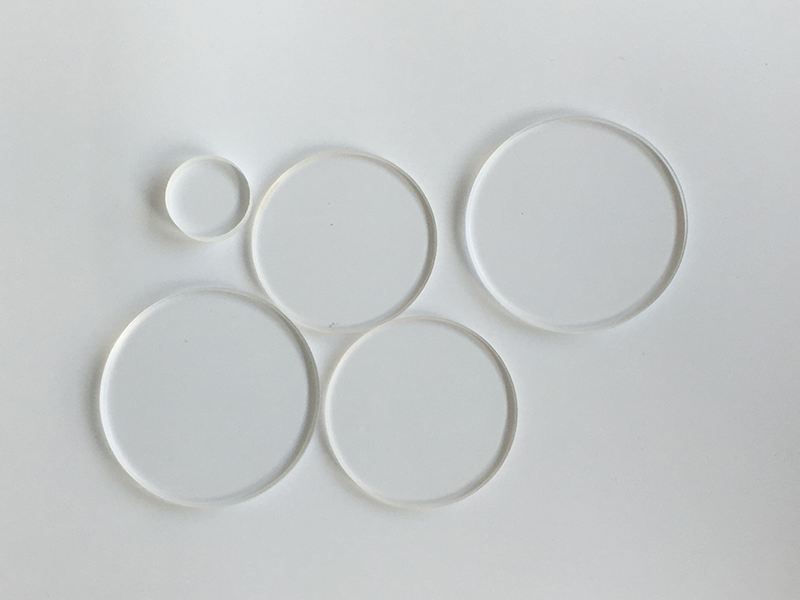Elimination of Bubbles in Mirror Glass
Click:
-Time:2022-06-09 10:18
Bubbles are often produced in the production of mirror glass, so the bubbles must be eliminated in the clarification process.


Generally, there are two methods to eliminate bubbles in the mirror glass:
1. atmospheric pressure clarification
Generally, the methods of increasing the temperature in the clarification stage, prolonging the melting time, increasing the clarifier and mechanical stirring are used to promote the bubbles in the glass liquid to float to the liquid level and disappear. The remaining tiny grey bubbles can be absorbed and disappeared by properly adjusting the temperature according to the principle of surface tension by taking advantage of the nature of bubbles dissolving in glass.
However, the clarification temperature cannot be increased without limitation. Too high a temperature will bring about the opposite effect, because the viscosity of the glass liquid will decrease at high temperature, which is easy to penetrate into the meteorological micropores of the refractory, so as to discharge the air gas and enter the glass liquid, resulting in micro bubbles. At the same time, too high temperature will also intensify the erosion of refractory materials, make Al2O3 in refractory materials dissolve in liquid glass, and locally increase the viscosity of liquid glass, which is not conducive to clarification.
2. decompression clarification
The so-called decompression means that the pressure in a certain space in the kiln is less than the atmospheric pressure. The principle is that reducing the surface pressure of liquid glass can accelerate the overflow speed of bubbles in the glass, and finally completely eliminate bubbles in the clarification stage. As the clarification temperature is reduced and the clarification quality is greatly improved by decompression clarification, good energy-saving effect is produced. The experiment shows that the loss can be reduced by 30%. In addition, the temperature of the original melting pool is as high as 1600 ℃, and the temperature of the melting pool is reduced by 100 ℃ by decompression clarification. In addition to saving a large amount of energy, the service life of refractory materials is prolonged and the emission of harmful gases is reduced.
The elimination of bubbles in mirror glass increases its light transmittance, transparency and service life, so it plays an important role in production.
Related articles
- Precautions for Use of Glass Mirrors
- Characteristics of High Pressure Resistant Glass
- Introduction to Liquid Level Gauge Glass
- Thermal Stability of Peephole Glass
Recommend
- Physical and chemical changes of heat resistant glass during
- Elimination of Bubbles in Mirror Glass
- Price of High Temperature Resistant Glass
- Precautions for Use of Glass Mirrors
- What Is the High Temperature Resistance of High Temperature R
- Factors affecting Glass Density
- Characteristics and Application of Glass Mirrors
- Characteristics of High Pressure Resistant Glass
- Introduction to Liquid Level Gauge Glass
- Performance and Purchase Precautions of Industrial Mirrors
Rank
- Application of high temperature resistant glass
- Precautions in the process of quartz tube cutting and picklin
- ultra-thick tempered sight glass for submarine
- What are the advantages and disadvantages of quartz tube heat
- The process of toughening of borosilicate tempered sight glas
- Where is high pressure resistant glass used?
- Introduction of elliptical quartz tube and oval quartz tube
- Introduction to the Characteristics of Quartz Glass Tube 1
- High temperature boiler sight glass for boiler
- Introduction to cold working process of quartz glass
Latest articles
- Physical and chemical changes of heat resistant glass during
- Elimination of Bubbles in Mirror Glass
- Price of High Temperature Resistant Glass
- Precautions for Use of Glass Mirrors
- What Is the High Temperature Resistance of High Temperature R
- Factors affecting Glass Density
- Characteristics and Application of Glass Mirrors
- Characteristics of High Pressure Resistant Glass
- Introduction to Liquid Level Gauge Glass
- Performance and Purchase Precautions of Industrial Mirrors

